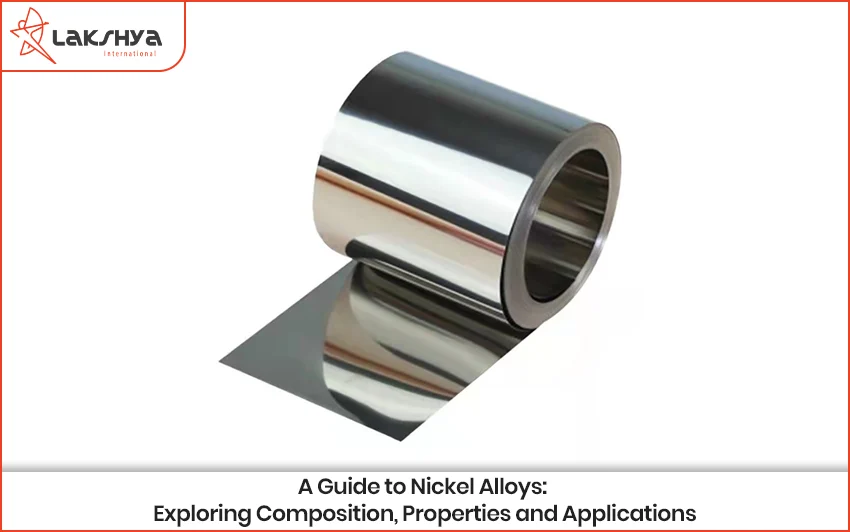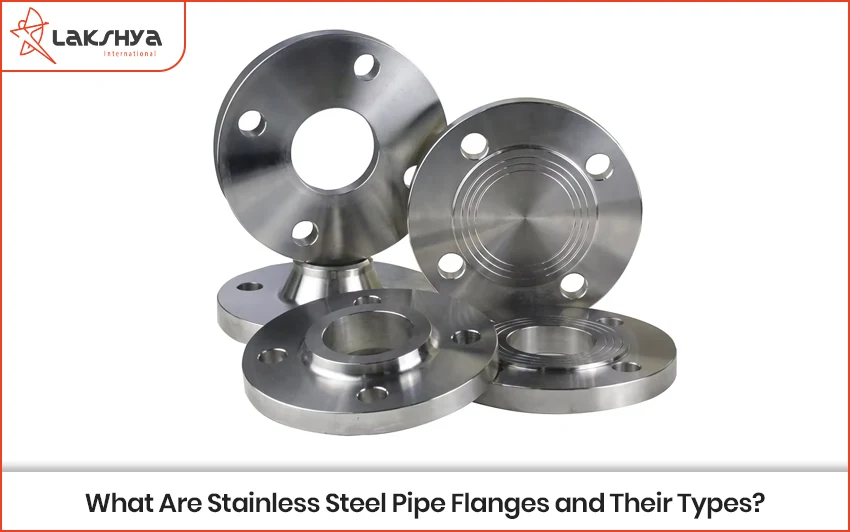From marine settings and power generation to aerospace and chemical processing, nickel alloys are absolutely vital in contemporary engineering and manufacture. This tutorial will go over what nickel alloys are, how they are produced, their composition, characteristics, several forms, and the sectors they enable.
What is a Nickel Alloy?
Nickel itself is a strong, ductile metal with outstanding oxidation and corrosion resistance. Alloys provide materials with extraordinary toughness, heat resistance, and in some cases magnetic qualities. For important components in aircraft, power generation, electronics, marine, and petrochemical sectors, nickel-based alloys are perfect because of their mix of qualities.
How Nickel Alloy is Manufactured
To get exact mechanical, chemical and structural traits, nickel alloys are produced by a painstaking multi-step procedure. Here’s the approach:
- Melting and alloying metals – Melted pure nickel is combined in a high-temperature furnace with other metals including chromium, iron, molybdenum, or copper. Under regulated conditions, this is carried out to provide a homogeneous composition over the alloy and prevent contamination.
- Casting and form development – After alloying, the molten metal is moulded into desired shapes rods, bars, wires, plates, or sheets using rolling, forging, or extrusion procedures and cast into moulds or forms. This stage guarantees the alloy is in a workable condition and begins aligning its internal structure for next use.
- Treatment by Heat – After that, the alloy is heat treated, that is, controlled heating and cooling cycles meant to enhance mechanical qualities including strength, hardness and ductility. Moreover, improving corrosion and oxidation resistance is heat treatment.
- Inspection and Finalisation – Machining, surface polishing, and thorough industry standard compliance examination comprise the last stage. Especially crucial for high-stakes applications in aircraft, marine and chemical processing, this guarantees the exact, robust and dependable nickel alloy components.
Nickel Alloy Composition and Key Properties
- Specifically in saltwater and marine conditions, copper (Cu) increases ductility and improves corrosion resistance.
- Chromium, or Cr, boosts resistance to high-temperature deterioration and oxidation.
- Molybdenum (Mo) increases strength and guards against pitting and crevice corrosion localized corrosion.
- Iron, or Fe, increases high-temperature stability and offers structural strength.
- In high-heat uses, titanium (Ti) adds to oxidation resistance and strength.
- Great mechanical power
- Superior oxidation and corrosion resistance
- Stability both structurally and thermally at higher temperatures
- Good fabricability and weldability.
- Medical Use: Biocompatibility
Uses of Nickel Alloys
- Astronautical – Strength and heat resistance are used in turbine blades, exhaust systems, and jet engine components.
- Chemical Manipulation – Nickel alloys are perfect for manufacturing pipes, valves, heat exchangers, and reactors that handle corrosive acids and chemicals.
- Gas & Oil – Perfect for downhole equipment, valves, and drilling components, resist sour gas and high-pressure situations.
Application of Nickel Alloys
- Generation of Power – Applied in high-temperature operating heat exchangers, boilers, and turbines.
- Nuclear Energy – Nickel alloys fit for nuclear reactor components since they resist radiation and keep stability at high temperatures.
- Transportation Vehicles – Found in exhaust systems, engine valves and turbochargers thanks to heat resistance and longevity.
- Electrical Instruments & Electronics – For their electrical conductivity and dependability, used in sensors, resistors, heating elements and connectors.
- Because of their biocompatibility and shape memory behaviour, medical nickel-titanium alloys find employment in dental wires, surgical equipment and implants.
- Cooking Techniques – Food-grade machinery and packaging systems would find nickel alloys, sanitary and non-reactive, perfect.
Types of Nickel Alloys
- Monel or nickel-copper alloys – particularly in marine and chemical settings, strong and corrosion-resistant.
- Nickel-Chromium Alloys (such as Nichrome) Applied in aeronautical parts and electric heating elements among high-temperature uses.
- Nickel-Chromium-Iron Alloys inconel among others – Perfect for furnace parts and gas turbines; great high-temperature strength and oxidation resistance.
- Often employed in medical equipment, nickel-titanium alloys such as nitinol are known for shape memory and superelasticity.
- Alloys of Copper-Nickel – Often with 90/10 or 70/30 copper-to–nickel ratios, utilised in marine equipment because of resistance to seawater corrosion and biofouling
Nickel-Based Superalloys for High-Performance Applications
Superalloys based on nickel-based design are meant to function under most harsh conditions. Along with chromium, cobalt, molybdenum, titanium, and aluminium these high-performance materials feature nickel. Under mechanical pressure and high temperatures, they keep strength and stability.
Superalloys are indispensable in critical situations because of their resistance to corrosion, mechanical creep, and thermal deterioration.
Copper Nickel Alloy vs Other Nickel Alloys: A Comparison
| Property | Copper Nickel Alloy | Nickel Superalloys | Nickel-Iron Alloys |
| Corrosion Resistance | High (especially in seawater) | Very High | Moderate |
| Temperature Tolerance | Moderate | Extremely High | High |
| Machinability | Good | Moderate | Good |
| Cost | Moderate | High | Low to Moderate |
| Common Applications | Marine, Desalination, HVAC | Aerospace, Turbines | Electronics, Sensors |
Advantages of Copper Nickel Alloys
- Retain mechanical integrity above normal temperatures by use of heat resistance.
- High tensile and fatigue strength will help to show strength and durability.
- Versatility: One can customize it for a broad spectrum of industrial purposes.
- For heating elements and electronics, electrical conductivity is appropriate.
- Perfect for manufacturing tools and mining equipment is wear resistance.
- Safe for application on dental and medical equipment is biocompatibility.
- Minimise distortion in applications sensitive to temperature by low thermal expansion.
How to Choose the Right Nickel Alloy for Your Application
- Copper-nickel alloys are ideal for marine usage; superalloys withstand chemical attack.
- Use Inconel or other superalloys for high heat settings.
- For heavy-duty uses, pick alloys with strong tensile and fatigue strength.
- If your design is intricate, seek for alloys with good machinability and weldability.
- Particularly for large-scale initiatives, weigh performance advantages against expenses.
Factors to Consider Based on Industry Needs
Consider also fabrication and weldability, especially for intricate components that need sharp machining or clever assembly. Finally, think about cost and value over time. While superalloys and other high-performance materials may demand a pretty penny up front, their toughness and low maintenance can translate into a far better ROI over the lifespan of the complex components in which they’re used.
Conclusion – Why Nickel Alloys Are Essential in Modern Industries
Lakshya Steel provides certified materials catered to your particular industrial need for superior Nickel Alloy products like Nickel 200, Nickel 201, and high-performance superalloys.




